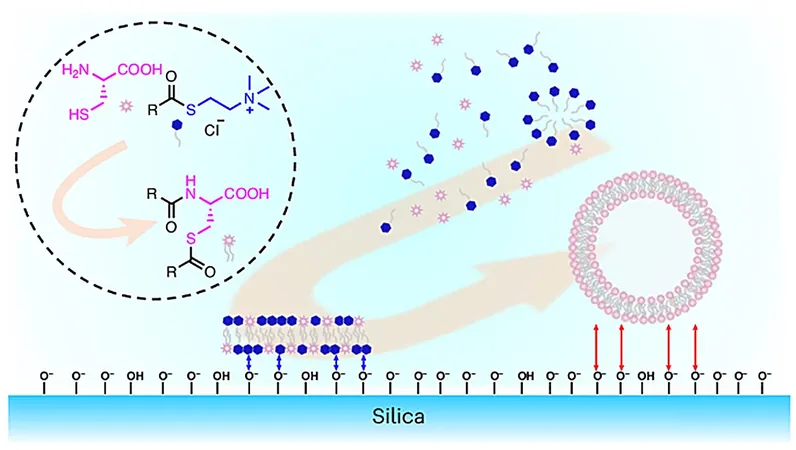
Unveiling the Origins of Life: Researchers Create Protocells to Decipher the Dawn of Cell Membranes
2024-11-03
Author: Ming
Introduction
In an exciting breakthrough, a collaborative team of biochemists from the University of California, San Diego, alongside biochemical engineers from the University of California, Los Angeles, has made significant strides in understanding how the primordial building blocks of life may have led to the creation of the first cell membranes on ancient Earth.
Research Overview
Their groundbreaking research, recently published in *Nature Chemistry*, delves into how short lipids emerged as a crucial component in forming early cellular structures. The scientists hypothesize that to initiate life on our planet, there needed to be some form of cellular boundary, a protective layer that would safeguard essential components from the harsh environment of early Earth.
Hypothesis on Early Cell Membranes
Typically, modern cell membranes consist of complex, long-chain lipids. However, this research pivots to a hypothesis focusing on the simplicity of early cell membranes, potentially comprising short fatty acids. The team undertook an innovative approach by combining cysteine, an amino acid thought to be abundant in the planet's formative days, with short fatty acids that feature eight carbon atoms.
Formation of Protocells
In a remarkable reaction, these combinations yielded lipid molecules with two tails that, intriguingly, formed self-assembling structures resembling primitive cell membranes, termed protocells. While these protocells do not contain the intricate components found in living organisms, they exhibit essential characteristics that could resemble early life forms, serving as a staging platform for life's evolution.
Membrane Structure and Conditions
The research revealed that the membranes of these protocells were arranged in a double-layer configuration, similar to modern cellular membranes, allowing them to encompass other molecules. This feature indicates a potential for molecular interaction and inclusion—key processes necessary for the emergence of life. Notably, these protocells withstood conditions that mirrored the early Earth's abundance of magnesium and calcium ions, further suggesting their viability in a prebiotic world.
Implications for Understanding Life's Origins
The implications of this research shed light on how cell membranes might have originated, paving the way for life as we know it. As scientists continue to explore these primordial lipids, we might be closer than ever to unraveling the mysteries of life's beginnings. Could this research be the key to understanding not just our origins but also the search for life beyond Earth? Stay tuned—science is about to unveil secrets long thought lost in time!




 Brasil (PT)
Brasil (PT)
 Canada (EN)
Canada (EN)
 Chile (ES)
Chile (ES)
 España (ES)
España (ES)
 France (FR)
France (FR)
 Hong Kong (EN)
Hong Kong (EN)
 Italia (IT)
Italia (IT)
 日本 (JA)
日本 (JA)
 Magyarország (HU)
Magyarország (HU)
 Norge (NO)
Norge (NO)
 Polska (PL)
Polska (PL)
 Schweiz (DE)
Schweiz (DE)
 Singapore (EN)
Singapore (EN)
 Sverige (SV)
Sverige (SV)
 Suomi (FI)
Suomi (FI)
 Türkiye (TR)
Türkiye (TR)